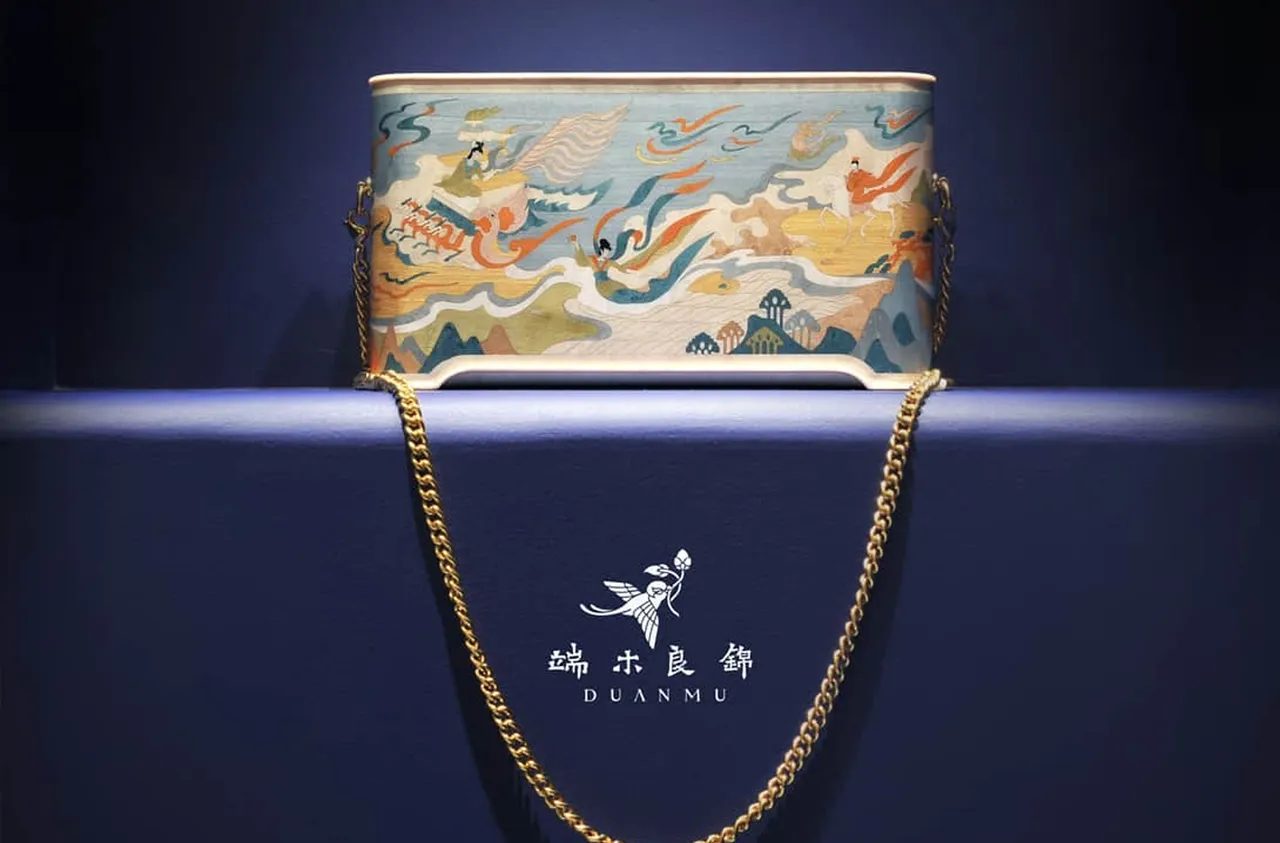The Promise of China
Today’s luxury shopper is spoilt for choice, and brands have to carve out a niche for themselves in their audience’s hearts and minds before gaining their share of the wallet. There are several promises that a conscious brand makes to forge a bond with its customers: its product quality, integrity, service, being socially responsible and diverse, and many more. Together, these promises form the values that a brand stands for.
An increasing number of customers, especially the empowered millennial and Gen Z shoppers, seek brands that share their values. They expect more than a new collection from their favourite designer label or a new gadget from their preferred tech brand. They want to feel a connection. A Motista study of over 100,000 consumers across 100+ brands found that customers who believe a brand shares their values and are, therefore, emotionally connected with it have a 306 percent greater lifetime value than customers who are simply satisfied.

Shoppers, in particular the affluent luxury consumers, are increasingly seeing brands through a human prism.
They expect them to have a personality a purpose beyond their bottom lines. They prefer brands that demonstrate human emotions such as ethics, principles, a conscience — and honour. The concept of honour has traditionally had its roots in every culture, especially in the contexts of family and society. In China, it also plays a significant role in the business world. Miànzi, the concept of ‘face’, is intrinsic to every facet of Chinese life, be it social, political, or business. Miànzi is social currency, with face being something that can be given (gěimiànzi 给面子), lost (diūliǎn丢脸), or fought for (zhēng miànzi争面子). It can be equated with the Arab concept of honour, and Western concepts of reputation and respect.
Reneging on a promise is looked upon with contempt anywhere in the world. In Chinese society, diū liǎn 丢脸 (to lose face) is downright disgraceful. Brands that hope to make a mark in China, the Eldorado for luxury labels, ought to be fully aware of the pitfalls of making promises they can’t keep. And for that, foreign brands must first understand the nuances of the very complex Chinese society. They ought to discard the marketing tricks and gimmicks that may have worked for them elsewhere and be aware of the Chinese consumer’s unique taste and cultural sensitivities.
The alternative isn’t just a missed financial opportunity. It’s serious brand damage.
The 2018 faux pas of D&G is still etched vividly in the minds of the industry when the ads to promote its Shanghai fashion show did not go down well with Chinese consumers, celebs, media — and even the government. The ads showed Chinese model Zuo Ye struggling to eat pizza, cannoli, and spaghetti pomodoro using chopsticks. The ads faced an immediate backlash from netizens, who saw them as racist, sexist, disrespectful, and stereotypical. A boycott that followed was so intense and extensive that the brand is yet to fully recover from the fiasco three years later.
As any brand worth its salt will know, the past three years in the Chinese luxury retail market were worth three decades in any other major market. In a year marred by declines all around the world, for instance, affluent millennials and Gen Z shoppers helped double mainland China’s share of the world luxury goods market in 2020. According to a Bain report, the global luxury market shrank by 23 percent last year while China’s share nearly doubled from 11 to 20 percent, putting it on a path to become the world’s biggest market by 2025 — overshadowing the whole of Europe and even the Americas.
According to China Luxury Report (McKinsey, 2019), the Chinese shopper was responsible for over half the growth in global luxury spending between 2012 and 2018 and is expected to deliver almost two-thirds of the world’s additional spending over the next four years. In 2025, Chinese consumers will spend a massive $183 billion on luxury items, 40 percent of the world’s luxury spending.
China, clearly, is the pivot on which the future of luxury retail hinges.
But courting millennials and Gen-Z — China’s large, conscious, and highly informed customer segment — is not easy. Over the past 15 years, Customer Experience Group, a born-in-China global consultancy, has seen several international luxury brands make the same painful mistakes in the lucrative yet unique Chinese market. At CXG, we’ve been living and breathing our ethos (We help brands deliver on their brand promises) since 2006, but believe it when we say that helping brands put their best image forward in China every day of every week of every month of the year isn’t a walk in the park.
Guiding brands away from cultural landmines and into the homes and hearts of the modern Chinese is as much an art as it is science. Unless one fully comprehends the subtle nuances of the Chinese way of living — the significance of miànzi, for instance, or the importance of guanxi (the power of relationships, not unlike the Arab concept of ‘wasta’) — winning over the affluent but demanding Chinese luxury shopper will remain a tricky proposition.
We’ve learned so many things in our decade-and-a-half of existence, but none more important than this: When in China, ignore local knowledge and sensitivities at your own peril. While a brand’s knowledge in Milan or Paris or London or any of the other global fashion capitals is priceless, if you don’t know what’s cooking in the couture cauldron of Chengdu, then you haven’t arrived in China, so to speak.
“The red carpets of Cannes and Venice have their own charm, but you must know what’s moving the ramps of Hangzhou and Chongqing.”
Born and bred in Shanghai, CXG is in a unique position wherein our learnings are local. Instead of recycling international insights for China, we have successfully taken our Chinese experience to the world. Synthesized from our collective experience of 15 years in the world’s most dynamic premium luxury retail market, here are our two diǎn (five, actually) to help global brands deliver on their promises.
1. Create, don’t translate
If China is important to your brand (can’t think of many brands that will not give an arm and a leg to capture a share of this market), don’t just translate your global campaigns – create a custom China strategy. A translated concept that ignores local sensitivities and insights could go very wrong, as the likes of D&G, Burberry, Mercedes, Marriott, Lancôme, and Balenciaga have discovered.
Brands that are serious about their China ambitions must up their cultural quotient and take cognizance of the fact that it is a very different market — and audience — from the ones they may have been used to. Local knowledge has no substitute anywhere in the world, and it’s inevitable for survival in the cut-throat Chinese market, which not only has a presence of every major global luxury brand but also has an abundance of homegrown brands that have caught the fancy of the high-spending Chinese shopper.
2. Step up your digital game

First, the facts. With $5.51 trillion in retail sales, the US remained marginally ahead of China ($5.13 trillion) in 2020. That said, China will outpace the US by nearly $2 trillion in e-commerce in 2021. E-marketer forecasts that more than 52 percent of China’s sales will take place online in 2021, making it a historic first. It will be the first time anywhere that a majority of retail sales for an entire country will be through e-commerce. To get a sense of the size of the country’s e-commerce market, consider this: China’s online retail market is larger than the next ten markets combined.
Thank China’s 855 million digitally savvy consumers for this. It is virtually impossible for China’s affluent and growing Z-lennials to separate their online and offline lives. They are always online, seamlessly socializing, transacting, learning, and playing on their numerous devices through a rich ecosystem of apps, including WeChat, Weibo, Douyin, Taobao, QQ, RED, and Zhihu, among others.
Chinese consumers combine their experience at physical retail stores with their online buying decisions. Businesses must integrate their brands into the digital lives of their audience, becoming a part of the consumer decision journey. They need to ensure that every touchpoint — including after-sales online support — follows the same high standards and offers the same luxury experience as their boutique or showroom does.
3. Joint ventures must be ‘joint’ in nature
Do not try to retrofit your global team with their Chinese colleagues without first asking the two to come up with a joint policy and work culture. The ownership should be joint, as should be execution. Otherwise, it won’t be a joint venture – just two incongruent halves often working at cross-purposes because of their divergent mindsets and different cultural understandings.
For one, the speed at which the Chinese work and implement projects is incredible. From e-commerce deliveries to building multi-storeyed structures, speed is of the essence in China. An e-mail unanswered for more than half a day can be a cause for concern. Decisions that would take weeks of deliberations in other parts of the world must be taken in a matter of hours in China to keep spoilt-for-choice investors interested. Moving faster requires agile systems, processes, and decision-making — and that could mean a complete overhaul of the existing systems.
In the same vein, a true joint initiative will need visibly equal efforts from all parts of the venture. The 9-to-5 work ethic with a two-day weekend is alien in China. It’s 996 here. That’s 9 AM to 9 PM, six days a week. The best advice for the foreign arm of a JV, therefore, will be to go into it with the mindset of a student, to learn, and not that of a master, to teach. For China has a lot to teach, and the world has a lot to learn.
4. KYC (Know your China)
China, occupying an area spanning 9.6 million square kilometers, is almost as large as the whole of Europe. To treat it as one homogenous market would be akin to painting the markets of Iceland, Belarus, and Turkey with the same broad brush. The best approach would be to treat China as a continent comprising many different countries.
Every region has its own set of consumer needs and demands. The geography and market characteristics of South China, which includes Hong Kong, Macau, and Hainan, among others, are completely different from those of Western China, which includes Chongqing, Chengdu, and Xi’an, among others. Having one strategy for the whole of China is a sure-shot recipe for disaster.
5. KYCC (Know your Chinese Consumer)

The millennial Chinese are very different from the Gen Z shopper, who is poles apart from the Gen X consumer. Their needs and wants are very different, as are their engagement and brand loyalty dynamics. Marketing tactics of brands that want to capture this diverse set of demographics need to be flexible and focused.
Consumers in Beijing are largely considered more conservative than those in Shanghai. The younger Chinese consumer is very conscious, and ethical shopping is at the top of her priority list. Differences in income, regional infrastructure, and weather cause a wide gap in consumption patterns of the customers. Size matters, too. Luxury brands need to adapt the sizes of their products for the Chinese market. A Western dress size Medium is good enough to be a Large in China.
There are other subtle factors at play, like cultural values, social influence, and even technology. The shopping and socializing platforms may vary, as do attitudes to technology. A smart brand wouldn’t have one marketing strategy to tap ‘the’ Chinese consumer – for there isn’t one.


